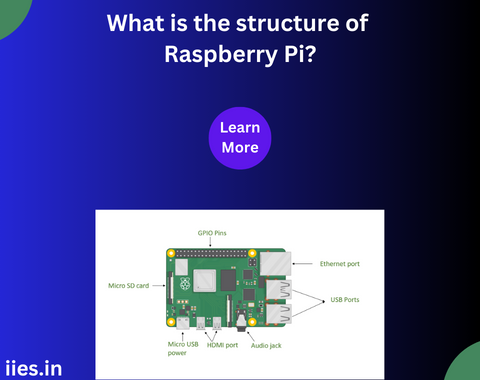
Raspberry Pi has revolutionized the world of computing, offering an affordable, compact, and versatile platform for a myriad of applications. However, understanding its structure is key to unlocking its full potential. In this article, we delve into the intricate design of Raspberry Pi, exploring its components and how they come together to create a powerful computing device.
In the ever-expanding landscape of technology, Raspberry Pi stands out as a beacon of innovation and accessibility. Since its inception, this credit-card-sized computer has captured the imagination of enthusiasts, educators, and professionals alike, offering a versatile platform for a multitude of applications. However, beneath its unassuming exterior lies a meticulously designed structure that forms the foundation of its capabilities.
1. The Foundation: The PCB (Printed Circuit Board)
– At the heart of every Raspberry Pi lies a printed circuit board (PCB), which serves as the foundation for all other components.
– The PCB provides the necessary connections and pathways for electricity to flow between different components.
– It is where the central processing unit (CPU), memory, and various other components are mounted, forming the core of the Raspberry Pi.
2. Central Processing Unit (CPU):
– Raspberry Pi models typically use ARM-based processors, which offer a balance between performance and power efficiency.
– The CPU is often accompanied by a GPU (Graphics Processing Unit), enhancing the device’s multimedia capabilities.
3. Memory:
– Raspberry Pi features two types of memory: RAM (Random Access Memory) and storage memory.
– Storage memory, usually in the form of a microSD card, holds the operating system, applications, and user data.
4. Input/Output (I/O) Ports:
– Raspberry Pi is equipped with a variety of I/O ports, allowing users to connect peripherals and interact with the device.
– Common ports include USB ports for connecting keyboards, mice, and other accessories, HDMI ports for video output, and GPIO (General Purpose Input/Output) pins for interfacing with external hardware.
– These ports enable Raspberry Pi to be used in a wide range of applications, from desktop computing to robotics and home automation.
5. Connectivity:
– To facilitate communication with other devices and networks, Raspberry Pi comes with built-in networking capabilities.
– This includes Ethernet ports for wired connections and Wi-Fi and Bluetooth modules for wireless connectivity.
– These features enable Raspberry Pi to be used in IoT (Internet of Things) projects, as well as for networking and communication applications.
6. Power Supply:
– Raspberry Pi requires a stable power supply to operate reliably.
– Most models can be powered using a micro USB or USB-C connector, with voltage and current requirements varying depending on the model and connected peripherals.
– Power management circuits on the PCB regulate the incoming power supply to ensure stable operation of the device.
7. Form Factor and Accessories:
– Raspberry Pi comes in various form factors, from the compact Raspberry Pi Zero to the more powerful Raspberry Pi 4.
– Additionally, a range of accessories such as cases, heatsinks, and expansion boards are available to customize and enhance the functionality of Raspberry Pi.
– These accessories cater to different use cases and applications, making Raspberry Pi a highly versatile platform.
Cooling and Thermal Management:
As Raspberry Pi devices can generate heat during operation, especially under heavy loads, they often require adequate cooling solutions.
Many users opt to attach heatsinks or even small fans to dissipate heat and maintain optimal operating temperatures.
Thermal management is crucial for ensuring the longevity and stability of the device, particularly in applications where it operates continuously or under demanding conditions.
Audio and Video Capabilities:
Raspberry Pi is equipped with audio and video capabilities, making it suitable for multimedia applications.
HDMI ports allow users to connect displays and TVs, enabling high-definition video output.
Audio output is supported through a 3.5mm audio jack or HDMI, providing options for connecting speakers or headphones.
These features make Raspberry Pi an excellent platform for media centers, gaming consoles, and digital signage applications.
Expansion Options:
Despite its compact size, Raspberry Pi offers numerous expansion options for extending its functionality.
Expansion boards, also known as HATs (Hardware Attached on Top), can be stacked on top of Raspberry Pi to add additional features such as sensors, actuators, and communication interfaces.
These expansion options enable users to customize Raspberry Pi for specific applications, such as home automation, robotics, and data logging.
Operating System Support:
Raspberry Pi supports a variety of operating systems, including Raspbian (now known as Raspberry Pi OS), Ubuntu, and various Linux distributions.
The operating system is typically stored on a microSD card and can be easily installed and updated using official or third-party tools.
Different operating systems offer distinct features and software ecosystems, allowing users to choose the one that best suits their needs and preferences.
Community and Ecosystem:
One of the key strengths of Raspberry Pi lies in its vibrant community and ecosystem.
Users can access a wealth of resources, including online forums, tutorials, and documentation, to learn, troubleshoot, and collaborate on projects.
The Raspberry Pi Foundation, along with a dedicated community of enthusiasts and developers, continues to support and innovate around the platform, driving its evolution and adoption worldwide.
Understanding the structure of Raspberry Pi is essential for harnessing its full potential. From the PCB and CPU to the myriad of I/O ports and connectivity options, each component plays a crucial role in shaping the capabilities of this versatile computing device. By grasping the intricacies of its design, users can unlock a world of possibilities, from DIY projects and educational endeavors to professional applications in various industries. As Raspberry Pi continues to evolve, its structure remains the cornerstone of its success, driving innovation and creativity in the world of computing.
Indian Institute of Embedded Systems – IIES